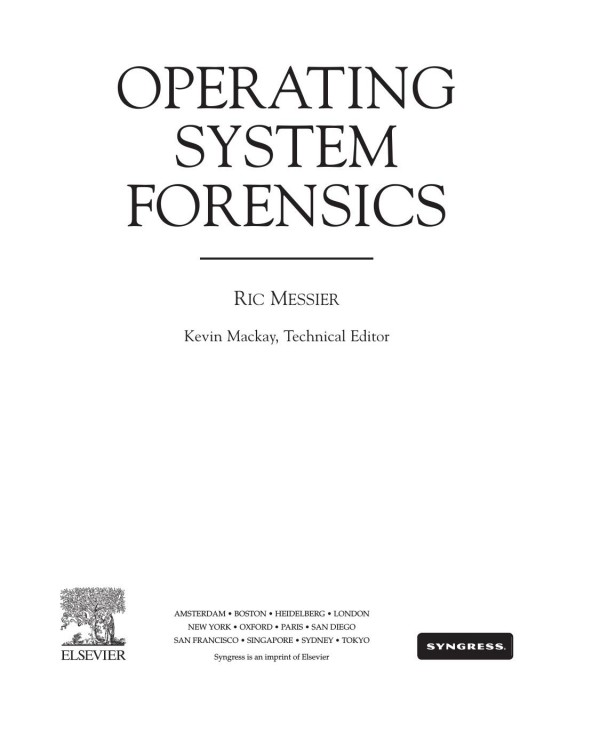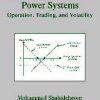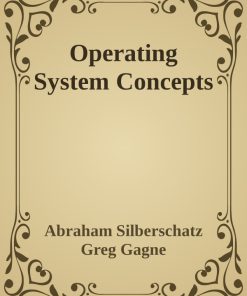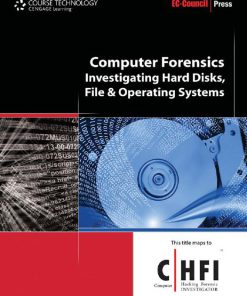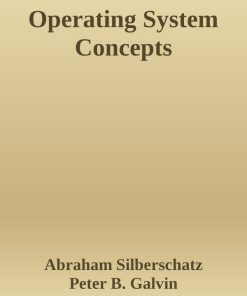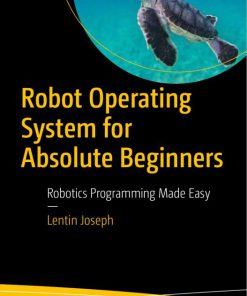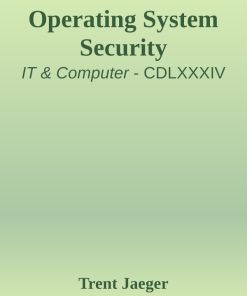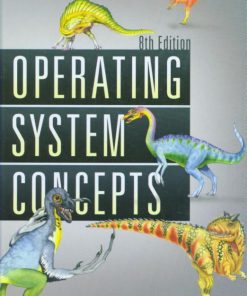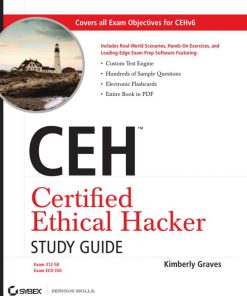Operating System Forensics 1st edition by Ric Messier 9780128019634 0128019638
$50.00 Original price was: $50.00.$25.00Current price is: $25.00.
Authors:Ric Messier , Series:Computer Science [163] , Tags:Computers; Security; General; Operating Systems , Author sort:Messier, Ric , Ids:9780128019498 , Languages:Languages:eng , Published:Published:Dec 2015 , Publisher:Elsevier Science , Comments:Comments:Operating System Forensics is the first book to cover all three critical operating systems for digital forensic investigations in one comprehensive reference. Users will learn how to conduct successful digital forensic examinations in Windows, Linux, and Mac OS, the methodologies used, key technical concepts, and the tools needed to perform examinations. Mobile operating systems such as Android, iOS, Windows, and Blackberry are also covered, providing everything practitioners need to conduct a forensic investigation of the most commonly used operating systems, including technical details of how each operating system works and how to find artifacts. This book walks you through the critical components of investigation and operating system functionality, including file systems, data recovery, memory forensics, system configuration, Internet access, cloud computing, tracking artifacts, executable layouts, malware, and log files. You’ll find coverage of key technical topics like Windows Registry, /etc directory, Web browers caches, Mbox, PST files, GPS data, ELF, and more. Hands-on exercises in each chapter drive home the concepts covered in the book. You’ll get everything you need for a successful forensics examination, including incident response tactics and legal requirements. Operating System Forensics is the only place you’ll find all this covered in one book.
Operating System Forensics 1st edition by Ric Messier – Ebook PDF Instant Download/Delivery. 9780128019634, 0128019638
Full download Operating System Forensics 1st edition after payment
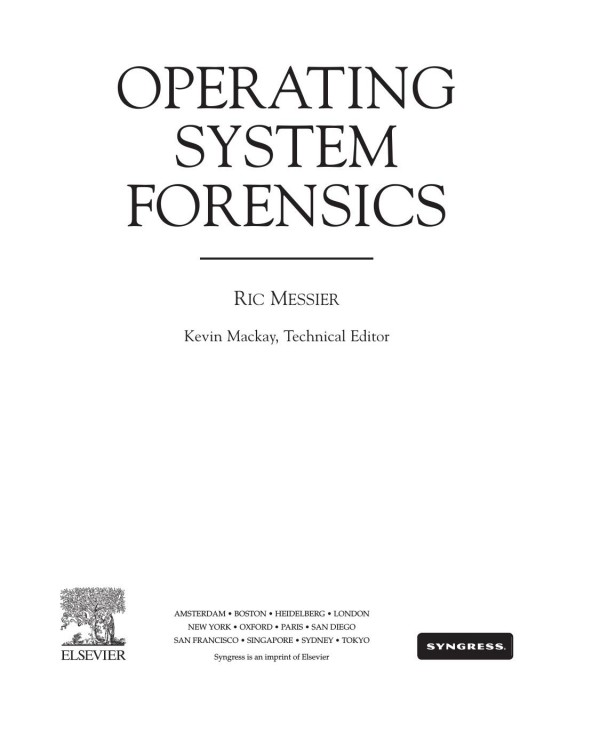
Product details:
ISBN 10: 0128019638
ISBN 13: 9780128019634
Author: Ric Messier
Operating System Forensics is the first book to cover all three critical operating systems for digital forensic investigations in one comprehensive reference.
Users will learn how to conduct successful digital forensic examinations in Windows, Linux, and Mac OS, the methodologies used, key technical concepts, and the tools needed to perform examinations.
Mobile operating systems such as Android, iOS, Windows, and Blackberry are also covered, providing everything practitioners need to conduct a forensic investigation of the most commonly used operating systems, including technical details of how each operating system works and how to find artifacts.
This book walks you through the critical components of investigation and operating system functionality, including file systems, data recovery, memory forensics, system configuration, Internet access, cloud computing, tracking artifacts, executable layouts, malware, and log files. You’ll find coverage of key technical topics like Windows Registry, /etc directory, Web browers caches, Mbox, PST files, GPS data, ELF, and more. Hands-on exercises in each chapter drive home the concepts covered in the book. You’ll get everything you need for a successful forensics examination, including incident response tactics and legal requirements. Operating System Forensics is the only place you’ll find all this covered in one book.
- Covers digital forensic investigations of the three major operating systems, including Windows, Linux, and Mac OS
- Presents the technical details of each operating system, allowing users to find artifacts that might be missed using automated tools
- Hands-on exercises drive home key concepts covered in the book.
- Includes discussions of cloud, Internet, and major mobile operating systems such as Android and iOS
Operating System Forensics 1st Table of contents:
Chapter 1: Forensics and Operating Systems
Abstract
Introduction
Forensics
Operating systems
Conclusions
Summary
Exercises
Chapter 2: File Systems
Abstract
Introduction
Disk geometry
Master boot record
Unified extensible firmware interface
Windows file systems
Linux file systems
Apple file systems
Slack space
Conclusions
Summary
Exercises
Chapter 3: Data and File Recovery
Abstract
Introduction
Data carving
Searching and deleted files
Slack space and sparse files
Data hiding
Time stamps/stomps
Time lines
Volume shadow copies
Summary
Exercises
Chapter 4: Memory Forensics
Abstract
Introduction
Real memory and addressing
Virtual memory
Memory layout
Capturing memory
Analyzing memory captures
Page files and swap space
Summary
Exercises
Chapter 5: System Configuration
Abstract
Introduction
Windows
Mac OS X
Linux
Summary
Exercises
Chapter 6: Web Browsing
Abstract
Introduction
A primer on structured query language (SQL)
Web browsing
Messaging services
E-mail
Conclusions
Exercises
Chapter 7: Tracking Artifacts
Abstract
Introduction
Location information
Document tracking
Shortcuts
Conclusions
Exercises
Chapter 8: Log Files
Abstract
Introduction
Windows event logs
Unix syslog
Application logs
Mac OS X logs
Security logs
Auditing
Summary
Exercises
Chapter 9: Executable Programs
Abstract
Introduction
Stacks and heaps
Portable executables
Linux executable and linkable format (ELF)
Apple OS X application bundles
.NET common language runtime (CLR) / Java
Debugging/disassembly
System calls and tracing
Finding the program impact
Conclusions
Exercises
Chapter 10: Malware
Abstract
Introduction
Malware categories
Using research
Getting infected
Staying resident (persistence)
Artifacts
Automated analysis
Manual analysis
Conclusions
Exercises
Chapter 11: Mobile Operating Systems
Abstract
Introduction
Encryption and remote control
Rooting/jailbreaking
Android
BlackBerry
iOS
Windows mobile
Conclusions
Exercises
Chapter 12: Newer Technologies
Abstract
Introduction
Virtualization
Cloud computing
Wearables
Drones
Conclusions
Exercises
Chapter 13: Reporting
Abstract
Introduction
Writing style
Artifacts
Reporting requirements
Reporting considerations
Report sample formats
Conclusions
Subject Index
People also search for Operating System Forensics 1st :
operating system forensics ric messier pdf
operating system forensics pdf
digital forensics operating system
best operating system for digital forensics
You may also like…
eBook PDF
CEH Certified Ethical Hacker Study Guide 1st edition by Ric Messier ISBN 1119800285 978-1119800286

